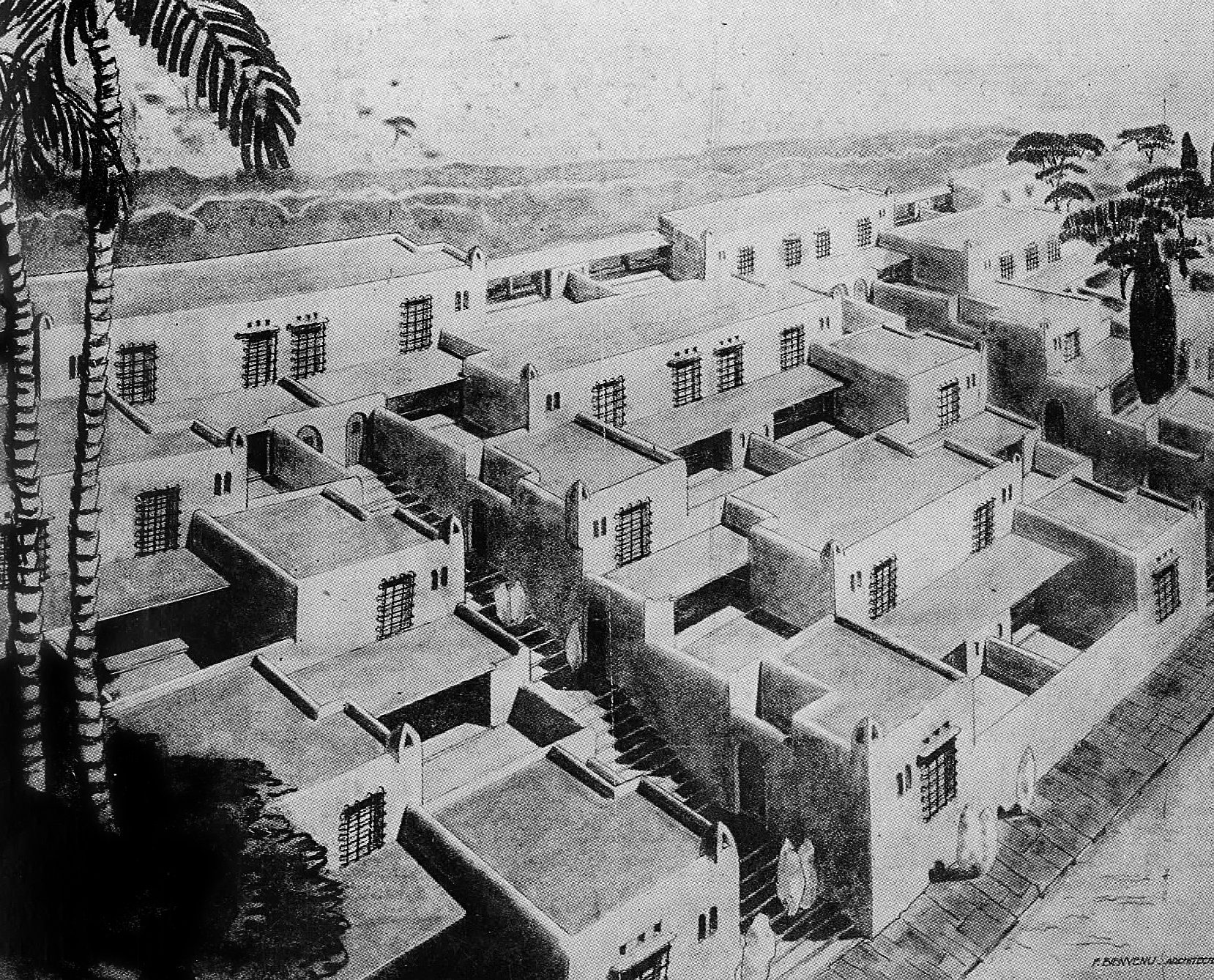Cited in Nabila Oulebsir, Les usages du patrimoine: monuments, musées et politique coloniale en Algérie, 1830-1930 (Paris: Maison des sciences de l’homme, 2004), 261.
The French colonial term “indigène” is often translated into English as either “indigenous” or “native.” In the English-speaking context, it is interchangeably used today in expressions like “indigenous knowledge,” “indigenous populations,” “indigenous art,” and “indigenous architecture.”
The 1870 Crémieux decree was abolished from 1940 to 1942 under the Vichy regime.
Lathuillière graduated from the École nationale supérieure des Beaux-Arts in Paris, where he attended the Atelier Emmanuel Pontremoli, a neoclassicist architect and winner of the Prix de Rome; he was likewise in contact with the Atelier du Palais de Bois, directed by Auguste Perret. See, for example, Boussad Aïche, “Figures de l’architecture algéroise des années 1930: Paul Guion et Marcel Lathuillière,” in Architecture au Maghreb (XIXe-XXe siècles) (Tours: Presses Universitaires François-Rabelais, 2011).
Article 2 of the constitutive statues of the SAM, as cited by the General Delegate of SAM in Emmanuel de Thubert, “Architecture moderne,” Chantiers, no. 3 (March 1933): 291–93.
On the French neo-Moresque style in Algiers, see for example Nabila Oulebsir, “Les ambiguïtés du régionalisme: le style néomauresque,” in Alger: paysages urbain et architectures, 1800-2000 (Paris: Les Editions de l’imprimeur, 2003), 104–25.
Frantz Jourdain, “Il faut être de son temps,” Chantiers, no. 3 (March 1933): 290.
Ibid., Oulebsir (2003), 118.
Ibid., de Thubert, 292.
The Algiers-based magazines Travaux nord-africains and Chantiers dedicated special issues to the exhibition. See Travaux nord-africains no. 1136 of 18 February 1933 and Chantiers no. 3 of March 1933. The first part on urbanism in Chantiers included the famous projects by Tony Soccard, Maurice Rotival, and Le Corbusier for the Quartier de la Marine.
Rudolphe Rey, “Tous urbanistes!,” Chantiers, no. 3 (March 1933): 237.
François Bienvenu, “L’habitation indigène et les quartiers musulmans,” Chantiers, no. 3 (March 1933): 246.
Ibid.
Ibid.
Ibid. On Bienvenu, see for example Zeynep Çelik, Urban Forms and Colonial Confrontations: Algiers under French Rule (Berkeley and Los Angeles: University of California Press, 1997), 130–43.
Exposition de la cité moderne : urbanisme, architecture, habitation, Alger du 28 mars au 19 avril 1936 (Alger: Comité d’Organisation, 1936), 8–9.
Pasquier-Bronde, “L’habitat indigène en Algérie,” L’Architecture d’Aujourd’hui, no. 3 (March 1936): 20.
Marcel Lathuillière and Albert Seiller, “Le problème de l’habitat indigène en Algérie,” L’Architecture d’Aujourd’hui, no. 3 (March 1936): 22.
Ibid.
Samia Henni, Architecture of Counterrevolution: The French Army in Northern Algeria (Zurich: gta Verlag), 205–232.
Marcel Persitz, “L’habitation indigène dans les colonies françaises,” L’Architecture d’Aujourd’hui, no. 3 (March 1936): 13–19.
Ibid., 14.
This does not mean that the term “Muslim” was never used before 1945. On the contrary, Islam and Muslim customs had been a subject of study for the French administration and social scientists since the onset of French colonization. The term “Muslim” was also used to designate a specific category of urban planning, for instance in Georges Marçais, “L’urbanisme musulman.” Algérie (May 1936), 8–9. Other expressions were also used, such as maison moresque (Moresque house) or urbanisme nord-africain (North African Urbanism). Except in a few cases—for instance in René Lespes’ article “L’évolution des idées sur l’urbanisme algérois de 1830 à nous jours.” Chantiers nord-africains, no. 3 (1933): 247–62—the appellation “Algerian house” was rarely employed. Algérois referred to the geographic region of Algiers and not to the inhabitants of Algiers. Because Algeria was deemed a French department, the terms Arab, Berber, nègre, and indigène were used to designate the settlements in which the Algerian colonized population lived.
Annie Fourcaut, “Alger-Paris: crise du logement et choix des grands ensembles. Autour du XIIe Congrès national d’habitation et d’urbanisme d’Alger (mai 1952),” in Alger, lumières sur la ville, actes du colloque de mai 2001 à Alger (Algiers: Éditions Dalimen, 2004), 128.
Ibid., 131.
Frantz Fanon, The Wretched of the Earth, trans. R. Philcox (New York: Grove Press, 2004), 1–9.
The term “development” deserves an entire article in itself.
Cited in Annie Fourcaut, “Alger-Paris,” 131.
Marcel Lathuillière, “Algérie 1955,” UIA: Union Iternationale des Architectes, no. 7 (May 1955): 2.
Ibid., Fourcaut, “Alger-Paris,” 131.
Report by Marcel Lathuillière, “L’habitat des musulmans dans les villes d’Algérie,” Rapport du XIIe Congrès national d’habitation et d’urbanisme (Algiers, May 1952), cited in Ibid., 132.
Positions is an initiative of e-flux Architecture.
